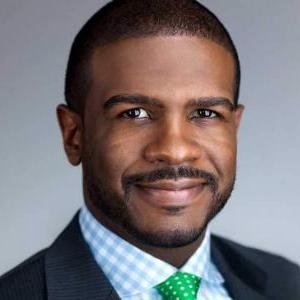2 minutes
Supervisory committee effectiveness is based on how well its members use their capabilities to achieve desired results.
In The 7 Habits of Highly Effective People, author Stephen Covey writes that effectiveness is measured by how well a person balances his or her production capability with his or her actual desired results.
The same holds true for credit union supervisory committees—their effectiveness is based on how well committee members use their capabilities to achieve desired risk management results for the institution. To get those results, committee members should hone key habits that help them perform their duties with ease and confidence.
By consistently following the following habits, your credit union’s supervisory committee can substantially improve your CU’s risk position. Those key habits include:
- understanding purpose,
- creating a diverse membership mix,
- effectively communicating the message,
- taking minutes that matter,
- asking the right questions,
- holding management responsible, and
- keeping all the other habits balanced.
Let us examine each of these habits in greater detail for the contribution each may offer in the work of your credit union’s supervisory committee.
1. Understanding purpose.
In any environment, it is essential to define and understand purpose. As a best practice, a supervisory committee should know its purpose, objectives and key responsibilities. For supervisory committees, defining and understanding purpose is grounded in having a sound charter regarding management of the committee. Common elements of a supervisory committee charter include:
- membership qualifications
- scope of responsibilities
- an outline of committee activities
Absent a sound understanding of purpose, committees are left with no mark against which to gauge their effectiveness.
2. Creating a diverse membership mix.
Supervisory committees can be most effective when the membership of the committee is diverse both in terms of thought and experience. Every supervisory committee membership should have the following archetypes present at the table:
- The Stickler - This person has deep knowledge of policies and regulatory guidance and believes in sticking to them.
- The Pragmatist - This person provides an unbiased voice of reason supported by experience and a strong set of risk management skills.
Each committee member uniquely contributes to helping the supervisory committee live out its charter and, thus, prevents the undesired conformity of groupthink.
3. Effectively communicating the message.
Supervisory committee meetings should serve as a forum for lively debate and airing thoughts on issues brought for consideration. Committee members must be open to and encourage diversity of ideas and candid discussions to thoroughly consider all aspects of the agenda topics. Thus, tolerance and a willingness to listen are important traits for committee members.
4. Taking minutes that matter.
Accurate minutes must be kept of supervisory committee meetings. This will help in recording a high-level summary of the discussions that take place within each committee meeting and promote better communication over time.
Minutes should include relative insights on not just the primary topics discussed, but also on each of the subtopics.
In addition to tracking the meeting topics, accurate committee minutes also capture any follow-up actions that may be required.
5. Asking the right questions.
Developing the habit of asking the right questions is crucial to being a member of any committee, including supervisory committees. Most supervisory committees will review the specific findings of the CU’s audit report. But the real work of the committee is to get to the “why” things are the way they are in the report. For example, if your regulator communicates that a process is broken, ask your managers about the root cause of the problem. Typically, it is a people or a process issue.
6. Holding management responsible.
An effective supervisory committee will have an effective tracking process. This process typically comprises an Excel or Word document that outlines the deficiency, manager responsible, and the committed time frame for resolution. This provide the committee with a mechanism to hold management accountable for outstanding deficiencies. Without this process, your institution is at risk of repeating the same mistakes.
7. The most important habit.
While focusing on the attainment of each individual habit, remember the importance of keeping them all balanced to achieve the most effective results. This way, the combination of these habits can essentially become the basis for effectively solving problems and managing risk.
Ancin Cooley is principal of Synergy Credit Union Consulting Inc., a national risk management advisory firm. Synergy offers a full suite of services for financial institutions. Our multi-disciplined approach combines the expertise of attorneys, workout specialists, appraisers, IT and compliance auditors. A former examiner leads and manages all services to ensure solutions are communicated with a regulatory perspective in mind.
Apply it to your Board Room:
- What is the charter of your supervisory committee?
- How are you living up to your charter?
- Which of these seven habits would it be most beneficial for your supervisory committee to focus on practicing?
Find more supervisory committee resources.






